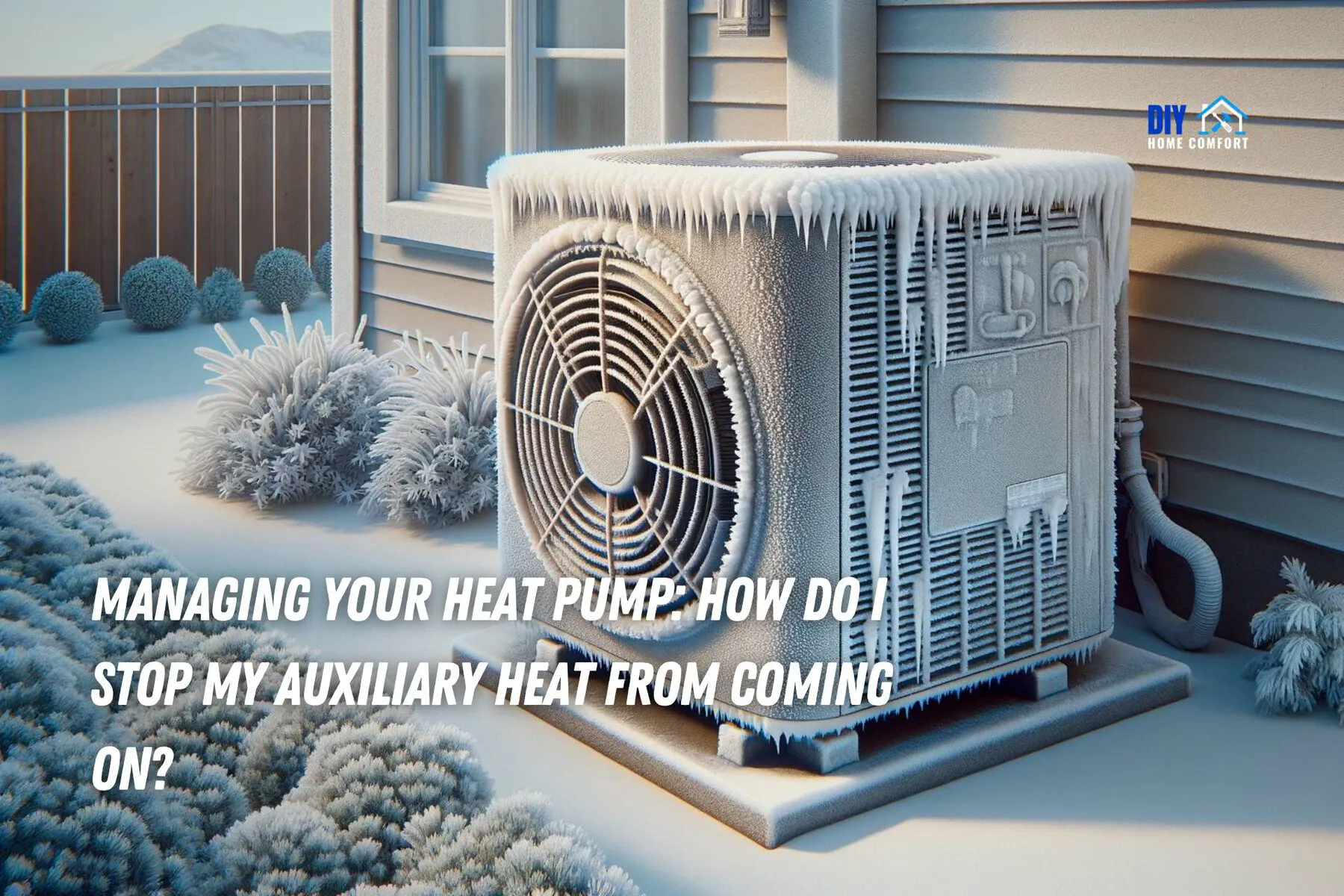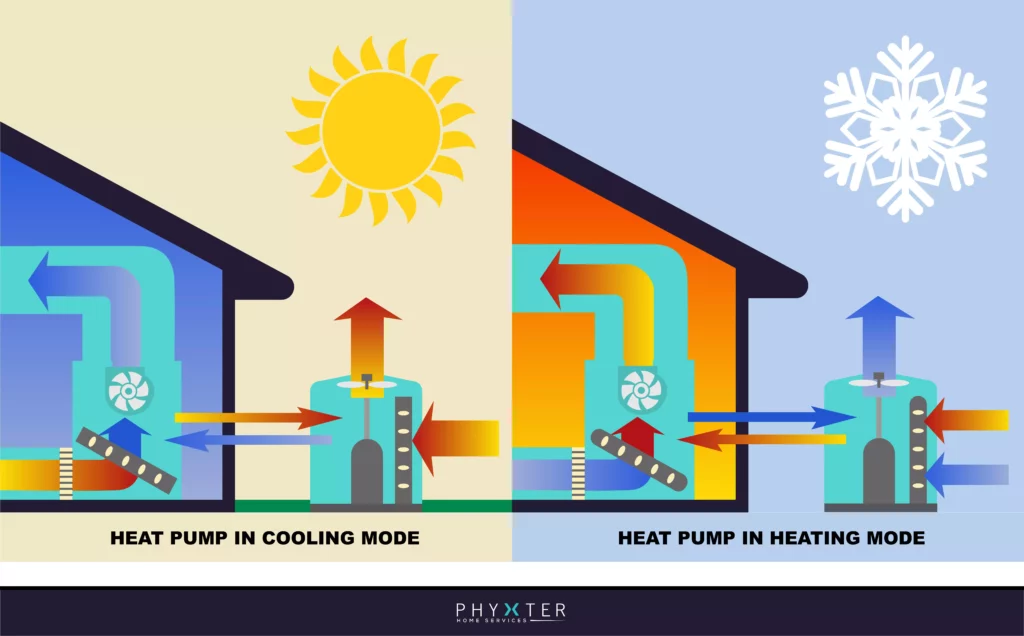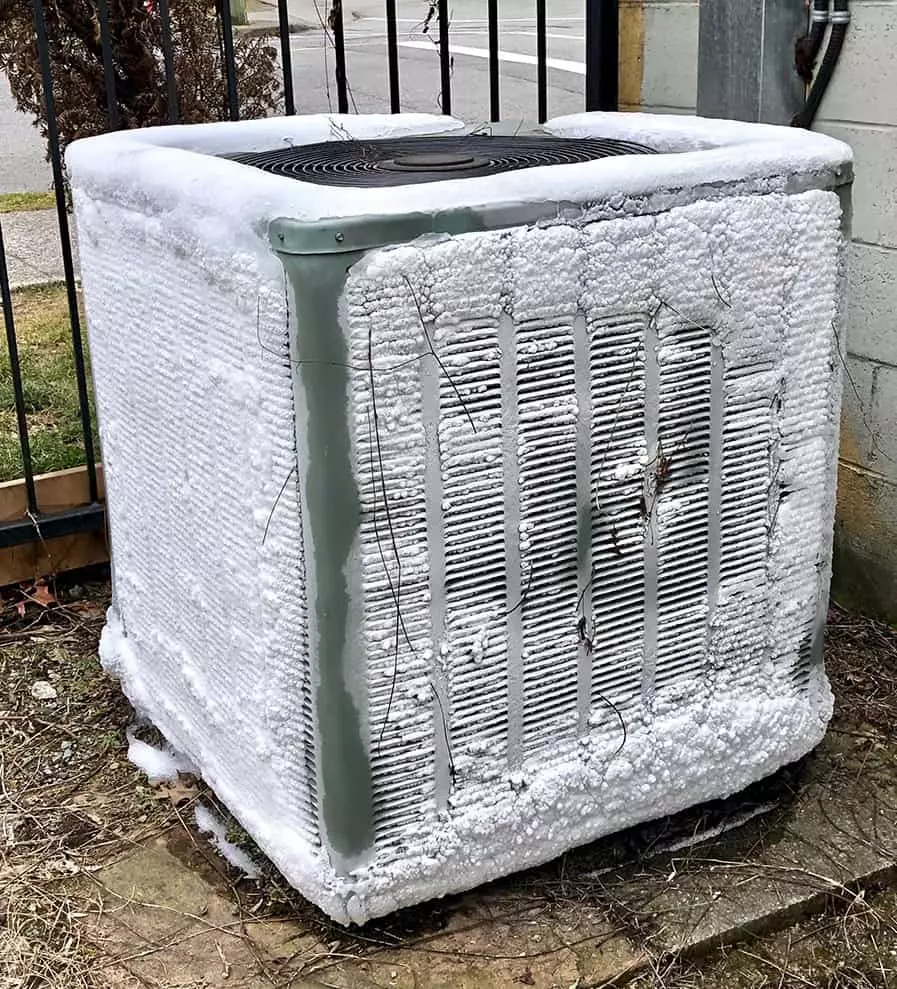Picture a cold winter evening. You’re snuggled up on your couch, enjoying a warm cup of cocoa, when suddenly, you notice your auxiliary heat coming on frequently.
Such moments can indeed make you wonder: “How do I stop my auxiliary heat from coming on?” Don’t worry; we’ve got you covered!
📘 Key Takeaways
- Auxiliary heat is a supplemental heating feature that helps a heat pump maintain the desired temperature.
- Strategies such as proper thermostat management, HVAC maintenance, insulation, and air sealing can help prevent unnecessary auxiliary heat activation and conserve energy.
- Increased use of auxiliary heat can lead to increased energy costs - being mindful of factors like efficiency & duration will help manage these costs.
⭐ Understanding Auxiliary Heat
Image Courtesy of Phyxter Home Services
Auxiliary heat, often simply called aux heat, is like a reliable friend to your heat pump. It steps in when your heat pump struggles to maintain the desired temperature, providing additional warmth and comfort through its auxiliary heating feature, also known as backup heat.
Imagine it as a backup singer who steps into the spotlight when the lead singer needs a break. Its role is to supplement heating, especially during periods of low outdoor temperatures or when the desired indoor temperature is significantly higher than the current one.
Recognizing when auxiliary heat is in action is simple. Your thermostat usually has an ‘AUX’ indicator that lights up when auxiliary heat is activated. But the pressing question is, is it possible to control its activation? Well, the answer is a partial yes.
Though it’s impossible to completely disable it, adjusting the aux heat settings on the thermostat allows you to control its activation.
📘 Related Reading: HVAC Insights: How Does a Heat Pump Work in Winter?
⭐ The Difference Between Auxiliary Heat and Emergency Heat
Auxiliary heat and emergency heat are like two sides of the same coin. Though both offer backup heating, their circumstances of use differ greatly.
Think of auxiliary heat as an automatic co-driver that takes over when the main driver (your heat pump) faces tough terrain (cold weather). On the other hand, emergency heat is like a spare tire, used only when there’s a flat (heat pump malfunction).
Emergency heat (EM heat) should only be activated manually when the heat pump is not functioning properly and the auxiliary heat fails to meet the thermostat’s requirements. It steps in as a secondary heating system.
However, remember that emergency heat doesn’t match the energy efficiency of auxiliary heat or the primary heat pump. It’s like using a power-hungry generator during a power outage—it gets the job done but at a higher energy cost.
📘 Related Reading: When Does a Heat Pump Switch to Emergency Heat?
⭐ Common Causes of Auxiliary Heat Activation
Identifying what triggers auxiliary heat is fundamental in effectively managing it. Various factors can lead to its activation from thermostat settings to heat pump defrost mode and even malfunctioning heat pump components.
Understanding these triggers allows you to develop strategies that minimize the need for auxiliary heat, keeping your home warm without escalating your energy bills.
Some common triggers of auxiliary heat include:
- Setting the thermostat too high
- Using the emergency heat setting
- A dirty or clogged air filter
- Malfunctioning heat pump components
By addressing these triggers and implementing energy-saving practices, you can reduce the reliance on auxiliary heat, such as electric resistance heating, and save on your heating costs.
Thermostat Settings
The settings on your thermostat significantly influence auxiliary heat activation. It’s like a command center directing the heat pump and auxiliary heat based on the set and indoor temperatures.
If you’ve set your thermostat at a temperature that’s significantly higher than the current indoor temperature, your auxiliary heat might kick in to make up for the difference quickly.
But what happens if the set temperature is not reached within a certain duration? Well, your thermostat automatically activates the auxiliary heat. It’s like a race against the clock, and if the heat pump can’t reach the finish line (set temperature) in time, the auxiliary heat steps in to help.
To prevent unnecessary auxiliary heat activation, it’s advisable to avoid setting the temperature too high in relation to the ambient temperature.
Heat Pump Defrost Mode
The defrost mode of your defrosting modern heat pumps can also trigger auxiliary heat. Picture a chilly winter morning with frost delicately forming on your heat pump’s outdoor coil.
The heat pump, in its defrost mode, routes hot air from inside your home to melt the frost. During this process, the auxiliary heat activates to maintain indoor warmth.
A heat pump’s defrost cycle, also known as heat pump defrosting, typically lasts only a few minutes. However, areas prone to frequent ice and snow in winter often experience defrost cycle issues, which can result in recurrent auxiliary heat activation.
Malfunctioning Heat Pump Components
Faulty heat pump components may also trigger auxiliary heat activation. For instance, if the condenser fan motor isn’t functioning properly, it hinders airflow, causing the heat pump to work less efficiently.
It’s like trying to run with a heavy backpack – you’ll tire quickly and need help to reach your destination. The “help” comes from the auxiliary heat, which kicks in to maintain the desired temperature.
Apart from the condenser fan motor, low refrigerant levels may also strain the heat pump, prompting the activation of auxiliary heat.
Other issues, like a faulty defrost control board, can lead to unnecessary auxiliary heat and buildup of frost on the condenser, reducing the heat pump’s effectiveness.
Strategies to Prevent Auxiliary Heat from Coming On
Preventing unwarranted auxiliary heat activation can uphold your heat pump’s efficiency and regulate energy costs.
Key measures include effective thermostat management, routine HVAC maintenance, and improving insulation and air sealing in your home.
Proper Thermostat Management
Effective thermostat management can help prevent unwarranted auxiliary heat activation. It’s akin to being a careful driver who adjusts the car’s speed based on road conditions to optimize fuel efficiency.
By setting the temperature differential to a higher value and avoiding setting the temperature too high, you can reduce the need for auxiliary heat.
One effective strategy is to lower the temperature setting in your home, preventing the heat pump from working harder and more quickly, which could trigger the auxiliary heat.
It’s like taking a leisurely drive instead of racing, conserving fuel, and reducing the need for pit stops (using the aux heat setting).
Regular HVAC Maintenance
Just as a car requires routine tune-ups for smooth operation, your HVAC system needs regular maintenance for efficient functionality.
Regular check-ups can ensure all components of your heat pump system, including the heat pump filter, are functioning properly and that it’s not low on refrigerant. This can improve its efficiency and reliability, reducing the need for auxiliary heat.
HVAC maintenance should be conducted at least twice a year—preferably before the winter season and in early fall. This helps ensure your heating system is functioning efficiently and can prevent the need for auxiliary heat.
Be vigilant for signs that suggest the need for HVAC maintenance, such as leakage, improper temperature circulation, or unusual noises.
Insulation and Air Sealing
Improving insulation and air sealing in your home can significantly reduce the need for auxiliary heat. It’s like wearing a warm coat in winter - you retain body heat and stay warm without needing to crank up the heater.
Enhanced insulation and air sealing can prevent heat loss, helping maintain a constant indoor temperature and improving the efficiency of your heat pump.
Prioritizing sealing and insulating your home, ensuring proper ventilation, and considering alternative heating systems like most heat pumps if electricity is unreliable can make a huge difference in your heat pump’s performance.
Specific insulation types and air-sealing techniques can be particularly effective in reducing the reliance on auxiliary heating.
Optimizing Heat Strip Use in Heat Pumps
Heat strips, also known as electric resistance heaters, are a common auxiliary heat source in heat pump systems. They provide quick, intense heat, which is beneficial during extremely cold conditions when the heat pump alone may not suffice. However, they are less energy-efficient than the heat pump's primary operation.
To optimize the use of heat strips:
- Thermostat Settings: Ensure your thermostat is set to a mode that minimizes unnecessary activation of heat strips. Setting it to a moderate temperature can prevent frequent cycling of the heat strips.
- Regular Maintenance: Keep your heat pump and heat strips well-maintained. A clean, well-functioning system is more efficient and less reliant on auxiliary heating.
- Energy Efficiency: Consider the energy cost implications of using heat strips. While effective, they can significantly increase your energy bills if used excessively.
- Professional Consultation: If you notice your heat strips activating more often than necessary, it may be wise to consult with a heating professional. They can diagnose any underlying issues and recommend solutions.
By understanding and appropriately managing your heat strips, you can enjoy a warm home during cold weather without incurring unnecessary energy costs.
When to Call a Professional
While understanding and effectively managing your HVAC system is beneficial, there may be circumstances that require professional assistance.
If your auxiliary heat is constantly running or your heat pump isn’t functioning correctly, it’s time to call an HVAC professional. It’s like calling a mechanic when there’s a persistent issue with your car – you need an expert to diagnose and fix it.
Unusual behavior from your HVAC system, such as:
- fluctuating temperatures
- loud noises
- escalated energy bills
- ongoing heating problems
These are warning signs signaling the need for a professional inspection. It’s always better to address these issues promptly to avoid bigger problems down the line.
The Impact of Auxiliary Heat on Energy Costs
The use of auxiliary heat can substantially affect your energy costs. It is less energy-efficient compared to heat pump heating. When used frequently or for extended periods, it can lead to higher energy bills, much like using a gas-guzzling vehicle for daily commuting.
The cost of using auxiliary heat is influenced by factors like the energy efficiency of the heat pump, the cost of the primary and auxiliary energy sources, and the duration and frequency of auxiliary heat usage.
Being mindful of these factors can help manage energy costs while maintaining a comfortable indoor environment.
Summary
Managing your auxiliary heat is about understanding how it works when it kicks in and what triggers its activation.
With the correct thermostat management, regular HVAC maintenance, and enhanced insulation and air sealing, you can effectively reduce the need for auxiliary heat, maintaining a comfortable home environment while keeping energy costs in check. And remember, when in doubt, don’t hesitate to call a professional!
Want to learn more about your HVAC system? Check out our other HVAC articles!
Scott Harding
Scott is the main author of DIY Home Comfort. He's also an experienced HVAC technician that enjoys home renovation and spending time with his family. You can find out more about him here.
Frequently Asked Questions
Why does my heat keep switching to auxiliary heat?
It looks like your AUX heat setting is coming on because the weather outside is freezing or the thermostat is set too high. It's also possible that a part of the heat pump is malfunctioning.
What temperature should auxiliary heat come on?
Auxiliary heat will turn on when the outside temperature is around 35-40 degrees F, and the indoor temperature is 3 degrees cooler than the thermostat setting.
How long can auxiliary heat run?
Auxiliary heat should only run until your home reaches the temperature set on the thermostat.
Is it bad if auxiliary heat comes on HVAC?
It's normal for AUX heat to come on in your HVAC system when the indoor temperature is 3 degrees colder than the thermostat setting. Most of the time, this heating system works as it should and needs a little extra power to get your home back to the desired temperature.
What is the purpose of auxiliary heat?
Auxiliary heat provides additional warmth when a heat pump cannot maintain the thermostat's temperature setting, acting as a supplemental heating system.





